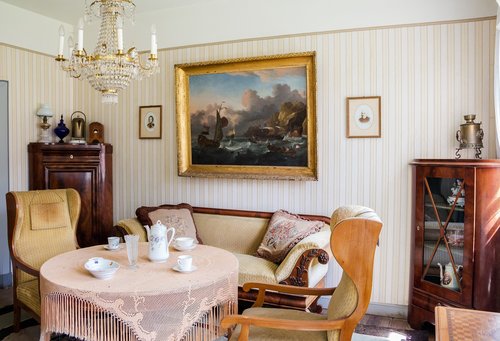The Value of Antique Furniture: Why You Should Consider Buying Vintage Pieces
In a world where trends change rapidly, antique furniture remains a steadfast symbol of artistry, history, and quality. For many, buying vintage pieces is not just a purchase but an investment in culture and craftsmanship. Antique furniture carries a story; each piece reflects the time it was made, the people who used it, and the skilled artisans who crafted it. The Value of Antique Furniture.
1. Historical Significance
One of the most captivating aspects of antique furniture is its historical significance. Each piece is a tangible connection to the past, reflecting the styles, materials, and craftsmanship of its era. Here’s why this historical aspect matters:
A. Connection to History
Owning antique furniture allows you to connect with history uniquely. Whether it’s a Victorian-era chair or a mid-century modern table, these pieces tell stories of the people and cultures that created them. For antique furniture buyers in Long Island, this connection can enhance the value of their collection, adding depth to their home’s narrative.
B. A Reflection of Cultural Heritage
Antique furniture often reflects the cultural heritage of the time and place where it was made. For instance, Art Deco pieces showcase the glamour of the 1920s, while Colonial furniture may highlight the simplicity and practicality valued in early American society. Incorporating these pieces into your home allows you to celebrate and preserve these aspects of history.
2. Exceptional Craftsmanship
Another reason antique furniture is prized is the level of craftsmanship involved in its creation. In an era of mass production, antique pieces stand out due to their:
A. Handcrafted Details
Many antique furniture items were meticulously handcrafted by skilled artisans, making them unique and of superior quality. These artisans often used techniques and materials that are not as common today, resulting in furniture that is both beautiful and durable.
B. Superior Materials
Antique furniture is often made from high-quality woods such as mahogany, walnut, and oak, which have become increasingly rare in contemporary furniture production. The longevity of these materials means that antique pieces can withstand the test of time, making them not only beautiful but also functional.
3. Sustainability
In today’s environmentally conscious society, sustainability is more important than ever. Antique furniture provides a unique opportunity for sustainable living:
A. Reducing Waste
By choosing antique furniture, you’re opting for a sustainable choice. Instead of purchasing new items that require additional resources to produce, buying vintage means you’re giving a second life to a piece that has already been crafted. This helps to reduce waste and the demand for new materials, which is a significant environmental concern.
B. Unique Style
Incorporating antique furniture into your home also allows you to express your personal style. For antique furniture buyers in Long Island, curating a collection of unique pieces can transform their living space into a personal museum of history and design.
4. Investment Value
Antique furniture can also serve as a sound financial investment:
A. Appreciation Over Time
Unlike many modern items that depreciate quickly, quality antique furniture tends to appreciate over time. For those in Long Island interested in becoming antique furniture buyers, it’s essential to consider not just the aesthetic value but also the potential financial return.
B. Market Demand
The market for antique furniture has been steadily growing, driven by collectors and enthusiasts who appreciate the artistry and history behind each piece. For antique furniture buyers in Long Island, this increasing demand can create opportunities for selling their pieces at a profit in the future.
Conclusion
The value of antique furniture goes beyond its aesthetic appeal. With historical significance, exceptional craftsmanship, sustainability, investment potential, and personal satisfaction, vintage pieces offer a unique opportunity for those looking to enrich their living spaces. As an antique furniture buyer in Long Island, embracing the charm of these time-honored treasures can transform your home while honoring the artistry and history that they embody.
See Also: Mastering the Art of Networking in the Tech and Corporate World: Key Skills for Career Growth.
FAQs
1. Where can I find antique furniture buyers in Long Island?
You can find antique furniture buyers in Long Island through local antique shops, estate sales, online marketplaces, and specialized auctions. Many buyers also attend antique fairs and exhibitions in the region.
2. How can I determine the value of antique furniture?
To determine the value of antique furniture, consider factors such as age, condition, rarity, provenance (the history of ownership), and market demand. Consulting with professional appraisers or antique dealers can provide insights into its worth.
3. What types of antique furniture are most popular?
Some of the most popular types of antique furniture include Victorian, Edwardian, and mid-century modern styles. Pieces like sideboards, armoires, and dining tables often attract collectors for their craftsmanship and historical significance.
4. How do I care for antique furniture?
Caring for antique furniture involves keeping it clean, avoiding direct sunlight, maintaining humidity levels, and using appropriate cleaning products. Regular dusting and occasional polishing can help preserve its be
